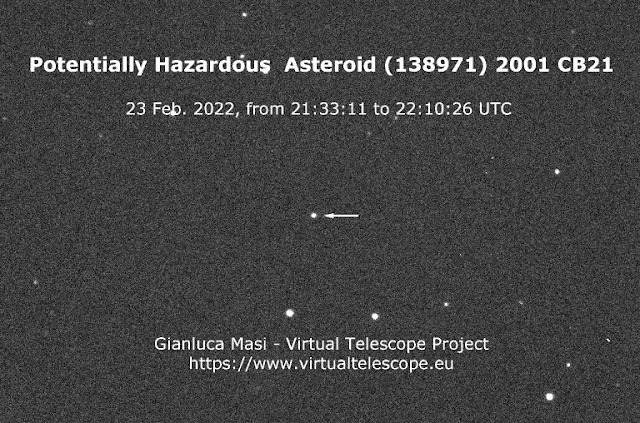According to data released by NASA's Center for Near-Earth Object Studies(CNEOS), astronomers will be able to observe a roughly 4,000 foot-wide.
According to the NASA database, the asteroid is 2001 CB21, and it is expected to be up to 3,940 feet in diameter. It will make its nearest to Earth on March 4 at 2:59 a.m. Eastern Time.
During its safe but close approach to Earth, the asteroid is expected to move at 26,800 miles per hour and will be around 3 million miles from Earth, or approximately 12 times the distance between the moon and Earth.
As the asteroid gets closer, Gianluca Masi, an astronomer with Italy's Virtual Telescope Project, photographed the space rock on February 23, when it was around 6.2 million miles from us.
Due to ever-increasing technical advancements that come with space telescopes, the number of "near-Earth objects" is increasing.
 |
| Potentially Hazardous Asteroid (138971) 2001 CB21: a time-lapse – 23 Feb. 2022. |
A "potentially hazardous asteroid" is defined as an asteroid that approaches within 4,650,000 miles of Earth and is greater than 500 feet in diameter.
If you want to witness the asteroid reach its closest approach to Earth, get on to the Virtual Telescope Project's Livestream, which will begin on March 4 at 3 a.m. UTC (10 pm ET March 3).

